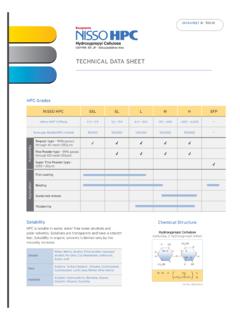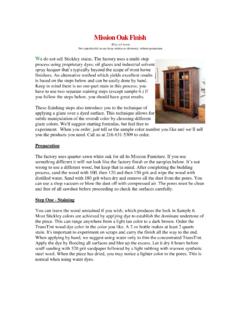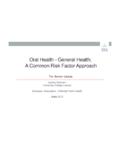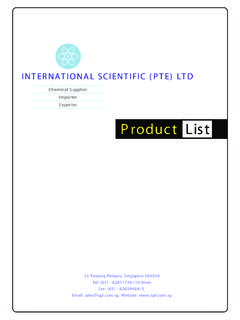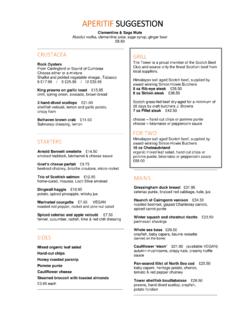Transcription of High Viscosity Grade of Hydroxypropyl Cellulose (HPC-H ...
1 APPLICATION NOTEHigh Viscosity Grade of Hydroxypropyl Cellulose (HPC-H) for hydrophilic matrix , sustained release FormulationNOTE #:APPLICATION:CR-2012-AAPSM atrix tabletHPC is a hydrophilic polymer which is solubilised by introduc-ing Hydroxypropyl groups that hinder the hydrogen bonding of hydroxyl groups of Cellulose . HPC is also thought as an effective CR material since it is a hydrophilic polymer which swells and be-comes a state of hydro-gel in water, and releases drug slowly with dissolution and diffusion.
2 In this study, we investigated effects of Viscosity , particle size, preparation method (direct compression and wet granulation) and CR materials (HPC and HPMC) on tablet properties and drug release using Theophylline as model Viscosity Grade of Hydroxypropyl Cellulose (HPC) is thought as an effective controlled release (CR) ma-terial since it is a hydrophilic polymer. In this study, we investigated effects of Viscosity , particle size, prepa-ration method and difference of controlled release polymer on drug release using Theophylline as model drug.
3 The results showed Viscosity , particle size and preparation method affected the drug release , and opti-mization of particle size was more critical for DC method. Also, HPC was found to sustain drug release more effectively than Hydroxypropylmethyl Cellulose (HPMC) in the case of the equivalent of Direct Compression (DC) tablet Powder for tablet was prepared by dry-mixing of materials except Magnesium Stearate in PE bag for 3 minutes. This was followed by addition of Magnesium Stearate and fur-ther dry-mixing for 30 seconds.
4 Laboratory scale rotary tablet press machine (VELA5, KIKUSUI SEISAKUSHO Ltd.) was used to compress tablet at 10kN of compression force. Tablet weight was 200mg and its diameter was of Wet Granulation (WG) tabletWet granulation process was carried out in high shear mix-er granulator (FS-GS-5, FUKAE PAWTEC Co., 500g Scale). All powder except Silica and Magnesium Stearate were added to the granulator and dry mixing for 1 minute. Granulation was operated for 4 minutes with pouring 30g of distilled water.
5 The impeller and chopper were operated at constant speeds of 400 rpm and 1500 rpm respectively. The granules were pre-dried and milled using 3mm grated screen followed by drying at 52 C and dried with fluidized bed system (FL-LABO, FRE-UND Co., Ltd.) at 80 C followed by milled using 1 mm grated screen. Powder for tablet was prepared by dry-mixing gran-ules of 30 mesh pass and silica in PE bag for 3 minutes. This was followed by addition of Magnesium Stearate and further dry-mixing for 30 seconds.
6 Tablet was prepared at 15kN of compression force by the same tablet machine as DC method. Tablet weight was 200mg and its diameter was of Dissolution ProfileRelease of theophylline was measured according to JP meth-od and concentration of theophylline at each time point was determined by measurement of absorbance at 271nm with UV spectrophotometer. CR MaterialsViscosity*(mPa s)D50 ( m)HPC-M-FP (Nippon Soda Co., Ltd)300107 HPC-H-FP (Nippon Soda Co., Ltd)1685108 HPC-H-FP (Nippon Soda Co.)
7 , Ltd)308991 HPC-H (Nippon Soda Co., Ltd)3040190 HPMC 4000 (Metolose 90SH-4000SR, Shin-Etsu Chemical Co., Ltd.)404090 HPMC 100000 (Metolose 90SH-100000SR, Shin-Etsu Chemical Co., Ltd.)9020095*2% acqueous solution @ 20 CINTRODUCTIONMETHODSMATERIALSSUMMARYI ngredients%Theophylline (Shiratori Pharmaceutical Co., Ltd.)50 MCC (Avicel PH-101, FMC Corporation) 19CR Polymer 30 Silica (Silysia 350, Fuji Silysia Chemical, Ltd) Stearate (Wako Pure Chemical Industries, Ltd.) FormulationControlled release (hours)Drug Released (%)HPC-H-FP (WG)HPC-H-FP (DC)HPC-H (WG)0204060801000510152025 Time (hours)Drug Released (%)HPC-HHPC-H-FPHPMC 4000 HPMC 100000 The results showed drug release rate depended on Viscosity and par-ticle size and effect of particle size was more critical in the case of DC method.
8 The result showed ideal range of particle size might be 45-106 m and in the case of bigger particle size, initial drug release became faster, and in the case of finer particle size, drug release rate became faster gradually while initial was sustained well. Particle size was found to affect on drug release in the case of WG method. HPC was found to sustain drug release more effectively than HPMC in the case of the equivalent Viscosity . In both DC and WG method, HPC-H was found to have equivalent control release performance to HPMC 100000 while its Viscosity is much America Pine Street, 14th FloorNew York, NY 10005 USA(T) The information described in this sheet is believed to be accurate and is presented in good faith with no guarantee or obligation as to accuracy and no assumption of liability.
9 Users should make their own tests to determine the suitability of products for their own particular use. NISSO makes no warranty of any kind, express or implied, including those of merchantability and fitness for particular purpose other than the material conforms to its applicable current standard Chemical Europe, GmbHBerliner Allee 42, 40212 Duesseldorf, Germany(T) OfficeNippon Soda Co., Ltd2-1 2-Chome, OhtemachiChiyoda-ku, Tokyo 100-8165 Japan(T) (hours)Drug Released (%)HPC-H-FP (3089mPa*s)HPC-H-FP (1685mPa*s)HPC-M-FP (300mP*s)Fig.
10 1: Effect of Viscosity (DC method)(Fig 1) Drug release from tablet prepared by HPC-M-FP was much faster than HPC-H-FP since its Viscosity was much lower. However, a difference in drug re-lease profile Viscosity of HPC-H-FP (1685mPa*s vs 3089mPa*s) was not observed. RESULTS AND DISCUSSIONCONCLUSIONSFig. 4: Effect of CR Polymer (DC Method) Fig. 2: Effect of Particle SizeFig. 3: Effect of Preparation Method0204060801000510152025 Time (hours)Drug Released (%)HPC-H (<45 m)HPC-H (45-106 m)HPC-H (106-250 m)HPC-H-FP (D50=91 m)0204060801000510152025 Time (hours)Drug Released (%)HPC-H-FPHPMC 4000 HPMC 100000(Fig.)

